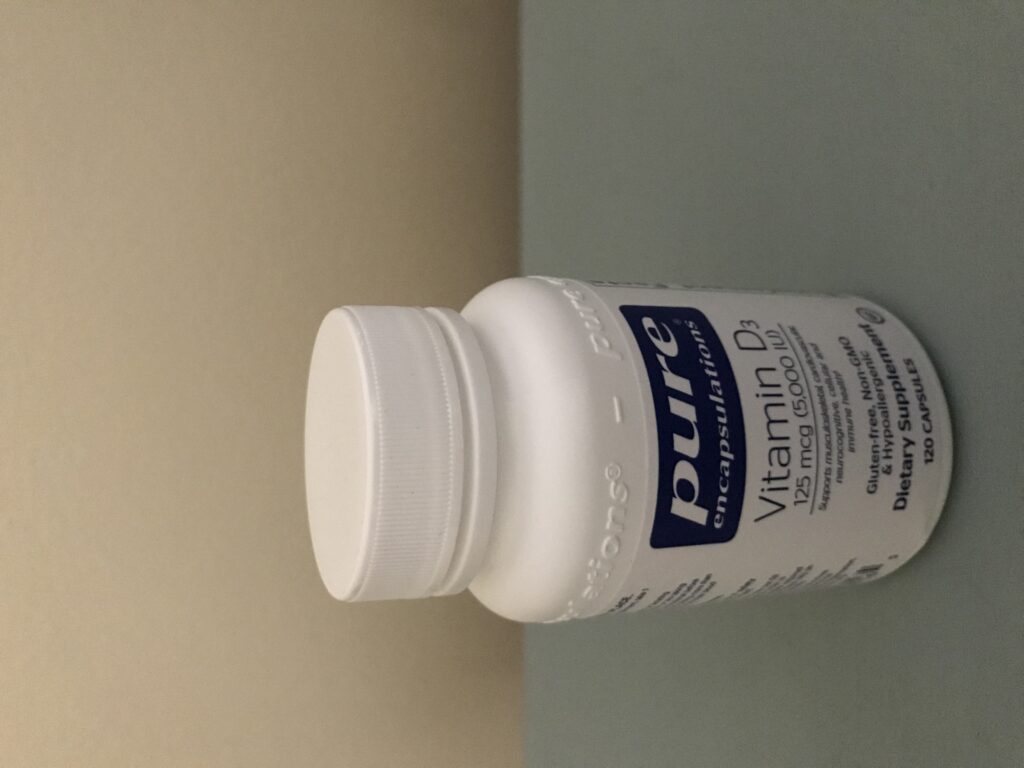Vitamin D3

Vitamin D is a fat soluble vitamin that is necessary for the body functions. Deficiency in vitamin D can result in rickets in children and osteomalacia in adults. Both of these diseases include softening of the skull bones, bowing of legs, spinal curvature, and increased joint. Recent studies are also linking low levels of vitamin D to thyroid disease and cancer.4
The D*action field trial was born in 2007 under the Grassroots Health Research. Now with over 15,000 self-subscribed participants, D*action not only helps people take charge of their health from the comfort of their home, it provides much needed peer-reviewed research on a vitamin D replete cohort. (The average vitamin D serum level of participants in D*action is 44 ng/ml, as compared to 25 ng/ml in the normal population).3
Many studies have noted a relationship between circumstances in which vitamin D deficiency is more prevalent (such as obesity, climate factors, geographic location and sun exposure, darker skin and certain health conditions) and the increased odds of COVID-19 severity and mortality. In addition, studies on COVID-19 patient data have shown an increased risk for COVID-19 incidence and severity among those with lower vitamin D levels, or decreased severity among patients receiving vitamin D supplementation, and more continue to be published.
How Much Is Enough?
Based on recent studies, vitamin D levels above 30 ng/mL correlate to better protection.1
While helpful, 30 ng/mL is on the lower end of the therapeutic level. We need to get our levels up to somewhere between 60 ng/mL and 80 ng/mL, especially as we approach the fall season.2
2 Easy Ways to Maintain Optimal Vitamin D3
If your vitamin D levels are low, here are some ways of raising them:
- Get some sun. As Dr. Al Sears discussed in Your Best Health Under the Sun, sunshine is essential for letting your body make its own vitamin D. Getting midday sunlight for about 10 to 15 minutes a day will give you between 3,000 and 5,000 IU of vitamin D3. It’s not enough to take a walk covered up. Sitting in your backyard with maximum skin exposed is recommended.
- Take a high-quality vitamin D3 supplement. As great as sunshine is, it isn’t always available because of weather, season, or working indoors. The vitamin D3, known as cholecalciferol is the same one your body produces. Just be sure to avoid the synthetic form of vitamin D2 in most multivitamins because it is less potent and less absorbable. This goes for the injectable 50,000 units. Use it in emergency and switch to Vitamin D3.
- Start with 2,000 IU supplements daily in the morning. Do not take it at night since it competes with melatonin and may keep you awake. If you are overweight, your dose needs are higher.
- According to how low your Vitamin D levels are, you may need 5,000 IU to 10,000 IU daily.
- Get your Vitamin D levels tested. It’s a simple lab test your doctor can order or you can get done through Grassroots Health without a doctor’s order. This will let you know where you stand so you can decide how to supplement to get to optimum levels.
Importance of Vitamin D in UVB Exposure
- Angle of the sun. If your shadow is longer than you are tall, you are not making much vitamin D.
- Time of day. Midday sun exposure between the hours of approximately 10am and 2pm is best for vitamin D production.
- Skin type. Vitamin D synthesis occurs faster in individuals with lighter skin types. Very light skin only needs around 15 minutes of sun exposure where those with dark skin will need exposure up to 6 times longer because darker skin allows less UV to enter the skin.
- Latitude. If you live in latitude from 0° to 35° north or south, year-round vitamin D production is possible. As the latitude increases, vitamin D production decreases.
- Amount of skin exposed. At least 40 percent of the entire skin surface should be exposed for optimal vitamin D production. The torso produces the most, legs and arms some, hands and face very little or none at all.
- Age. Individuals over the age of 60 and under the age of 20 can take up to four times as long to synthesize vitamin D.
- Sunscreen. Up to 95 percent of vitamin D production can be blocked by an SPF as low as eight.
- Altitude. More UVB is filtered out of the atmosphere at the beach as opposed to a mountain top.
- Being behind glass. Glass blocks all UVB rays. ( Dr. Al Sears)
1. Grant WB, et al. “Evidence that vitamin D supplementation could reduce risk of influenza and COVID-19 infections and deaths.” Nutrients. 2020;12(4):E988. https://www.grassrootshealth.net/wp-content/uploads/2020/04/Grant-GRH-Covid-paper-2020.pdf
2. Tello M. “Vitamin D: What’s the “right” level?” Harvard Health Publishing. Updated April 16, 2020.
3. Grassroots Health, personal Vitamin D testing kits, https://daction.grassrootshealth.net/tests/
4. Dr. Al Sears Wellness Institute, Importance of Vitamin D to your Health, https://www.drsearswellnessinstitute.org/healthy-living/healthy-tips/lifestyle/vitamin-d-your-health/

Comments are closed, but trackbacks and pingbacks are open.